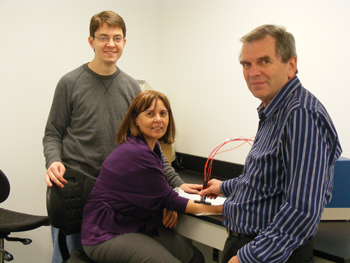 When Elisabeth Papazoglou interviewed to be a biomedical engineering professor at Drexel University several years ago, she realized the Philadelphia school had a strong research emphasis in infrared technology. When she attended a seminar on diabetic wounds some time later, the Drexel prof had the idea to apply the technology to a therapeutic area that treats six million Americans and costs more than $20 billion annually.
When Elisabeth Papazoglou interviewed to be a biomedical engineering professor at Drexel University several years ago, she realized the Philadelphia school had a strong research emphasis in infrared technology. When she attended a seminar on diabetic wounds some time later, the Drexel prof had the idea to apply the technology to a therapeutic area that treats six million Americans and costs more than $20 billion annually.
Papazoglou’s idea is now in the form of a proposed device that uses near-infrared technology to go beyond the current paradigm that measures wound size by digital imaging and actually measures the level of oxygenated and deoxygenated hemoglobin at the wound site. The device aims to shorten observation time and reduce the cost of care for chronic wounds by 30-60 percent.
“We were the first team to prove (near-infrared) had the capability to monitor wounds,” says Papazoglou. “It can really make a difference because speed of treatment is critical.”
Papazoglou and her team won the 2008-2009 Wharton Business Plan Competition and recently earned a $100,000 investment from the University City Science Center’s QED proof-of-concept program. Clinical studies are ongoing at Hahnemann University and slated to begin at Temple University.
Complex wounds lead to more than 150,000 amputations in the U.S. every year, and almost half of those are attributable to complications of diabetes, expected to grow the wound market by 55 percent by 2025.
“The next level would be getting money from top clinics and research institutions,” says Papazoglou. “We want to position it to top hospitals by selling its cost benefits, on top of the quality of life benefits.”
Source: Elisabeth Papazoglou, Drexel University
Writer: Joe Petrucci
Photo: Elizabeth Papazoglou with her team, Michael Weingarten and Leonid Zubkov